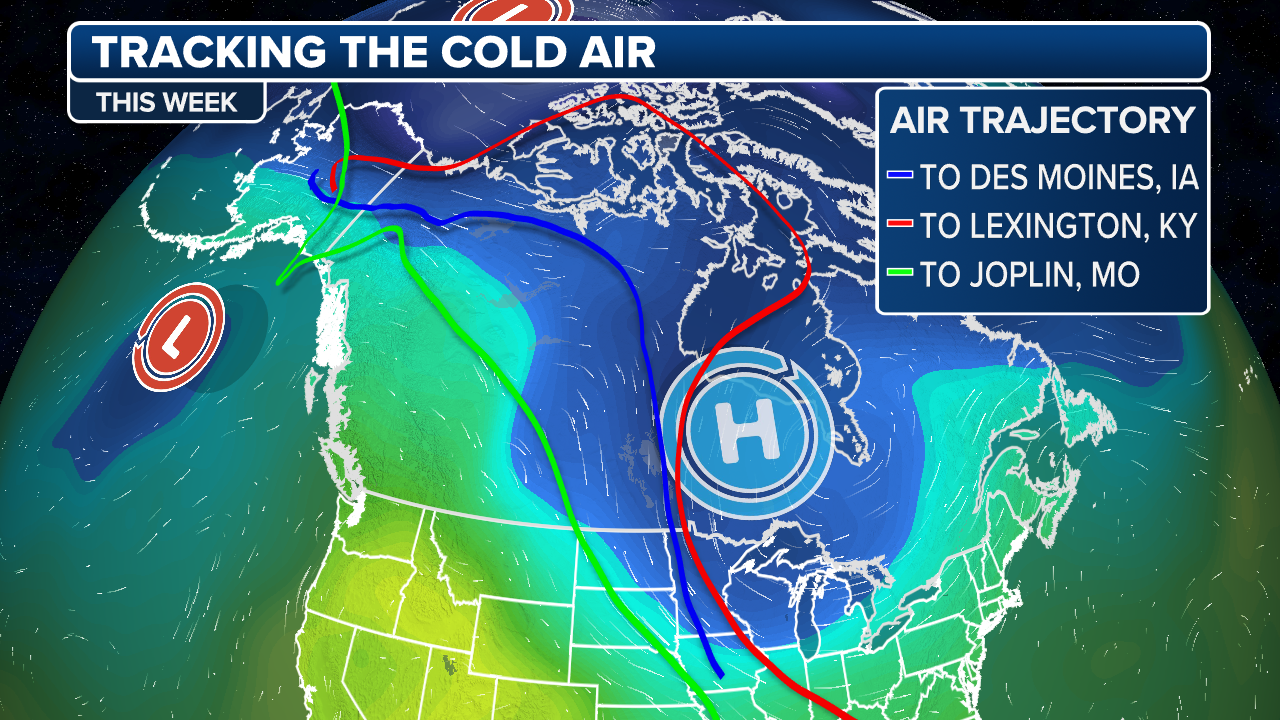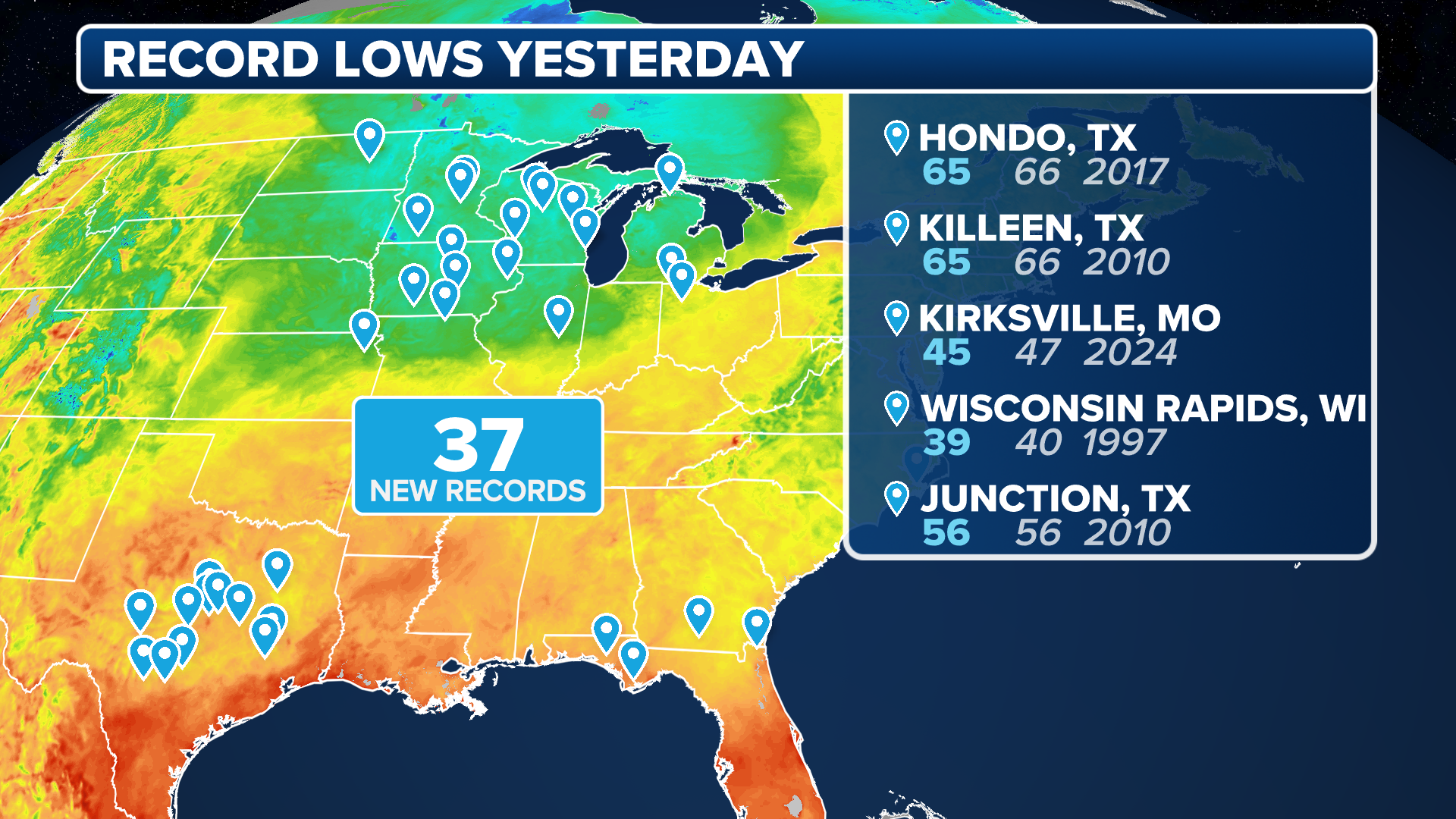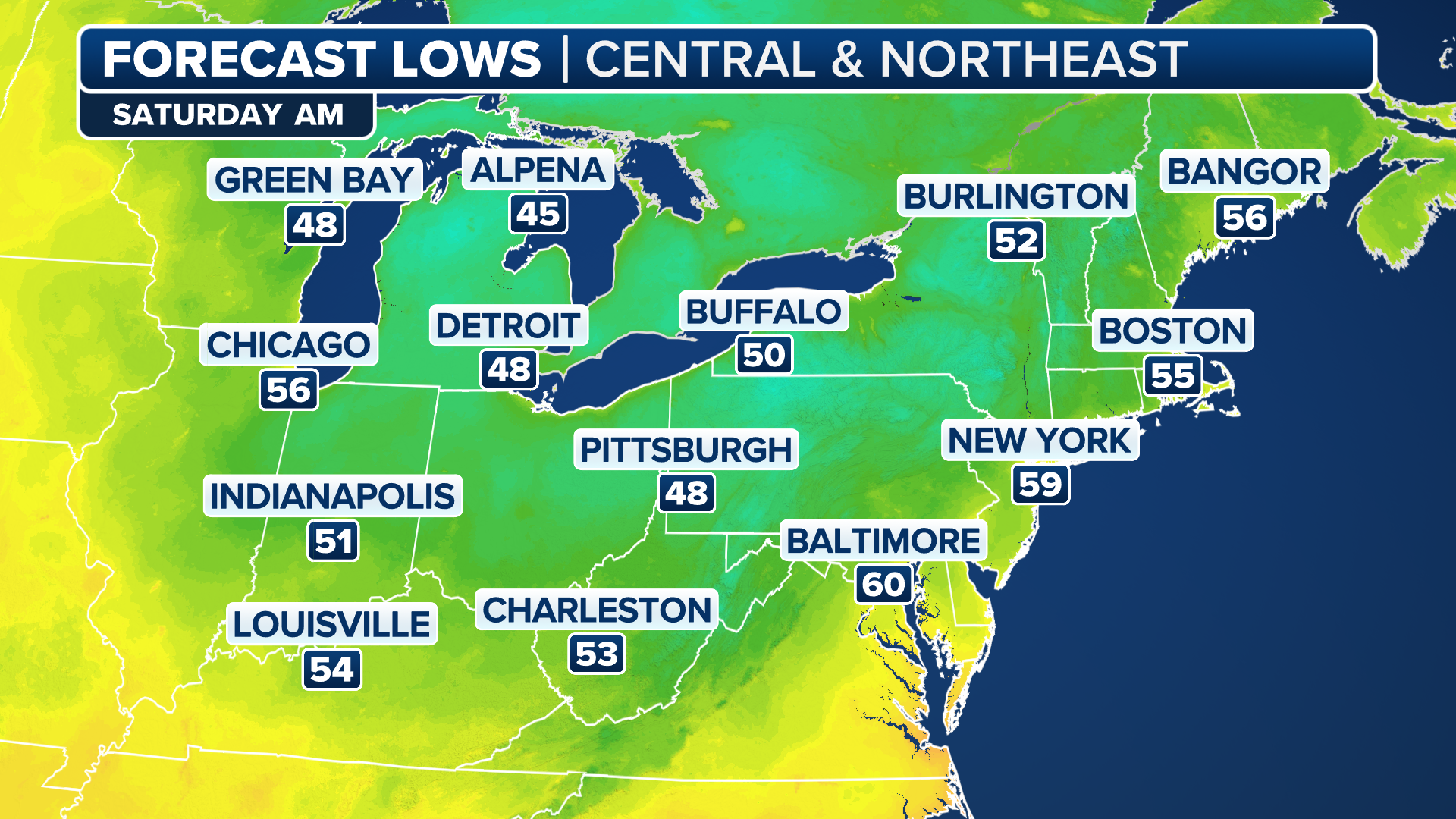Record-setting fall-like cooldown covers 200 million in central and eastern US, lasting into Labor Day weekend
At least 80 record-low temperatures were set Tuesday, mostly across the central U.S., including Kansas City, Missouri, which dipped to 50 degrees.
August to end with record low temperatures, bringing fall-like feel
Dozens of record low temperatures have been set across the central U.S. this week as cool conditions blanket nearly 200 million people across the central and eastern U.S. The fall-like temperatures will last through the first part of the Labor Day weekend.
CHICAGO – The U.S. is dealing with a tale of two forecasts, as the West experiences an ongoing heat wave and a cold front pushes into the Plains, bringing a fall-like feel to more than 200 million for the eastern half of the country.
Just in time for the return of the Pumpkin Spice Latte, the FOX Forecast Center is tracking a pattern change from a low-pressure system out of Canada, with a trailing cold front moving into the Great Lakes and the central Plains.
At least 80 record-low temperatures were set Tuesday, mostly across the central U.S., including Kansas City, Missouri, which dipped to 50 degrees.

(FOX Weather)
Parts of West Virginia and Ohio dropped into the 40s on Tuesday, tying 50-plus-year-old records.
While the coldest air is expected to remain across the Plains, cooler air also arrived in the Northeast on Tuesday morning, providing relief from the normally hot and humid conditions associated with the end of August.

(FOX Weather)
On Sunday and Monday, nearly 100 million experienced below-average temperatures in the northern Plains and upper Mississippi Valley.
Parts of northern Minnesota saw lows in the 30s Monday morning, prompting a Frost Advisory from International Falls to West Cook.
On Wednesday, record-cold high temperatures are possible, according to the FOX Forecast Center.

(FOX Weather)
According to NOAA’s Climate Prediction Center, this dramatic temperature swing will bring below-average temperatures through the end of August and into the first week of September.
The unseasonably cool weather is forecast to last at least through Saturday, in time for the Labor Day holiday weekend.
This weather change has coincided with the start of meteorological fall on Sept. 1, but astronomical fall doesn't begin until Sept. 22.
